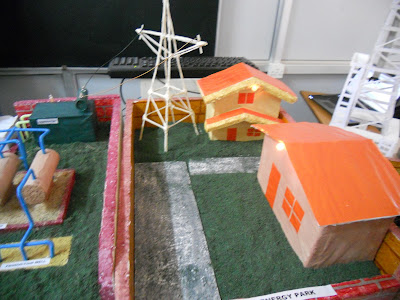Plate Tectonic -Science Exhibition 2012-Dept of Applied Geology, Kuvempu University.
PLATE TECTONIC MOVEMENT
Plate tectonics (from the Late Latin tectonicus, from the Greek: τεκτονικός "pertaining to building")[1] is a scientific theory that describes the large scale motions of Earth's lithosphere. The theory builds on the concepts of continental drift, developed during the first decades of the 20th century, and accepted by the majority of the geoscientific community when the concepts of seafloor spreading were developed in the late 1950s and early 1960s.
The lithosphere is broken up into tectonic plates. In the case of the Earth, there are currently seven or eight major (depending on how they are defined) and many minor plates. The lithospheric plates ride on the asthenosphere. These plates move in relation to one another at one of three types of plate boundaries: convergent, or collisional boundaries; divergent boundaries, also called spreading centers; and conservative transform boundaries. Earthquakes, volcanic activity, mountain-building, and oceanic trench formation occur along these plate boundaries. The lateral relative movement of the plates typically varies from 0–100 mm annually.
The tectonic plates are composed of two types of lithosphere: thicker
continental and thin oceanic. The upper part is called the crust, again of two
types (continental and oceanic). This means that a plate can be of one type, or
of both types. One of the main points the theory proposes is that the amount of
surface of the (continental and oceanic) plates that disappears in the mantle
along the convergent boundaries by subduction is more or less in equilibrium
with the new (oceanic) crust that is formed along the divergent margins by
seafloor spreading. This is also referred to as the conveyor belt principle. In
this way, the total surface of the globe remains the same. This is in contrast
with earlier theories advocated before the Plate Tectonics paradigm, as it is
sometimes called, became the main scientific model, theories that proposed
gradual shrinking (contraction) or gradual expansion of the globe, and that
still exist in science as alternative models.[3]













